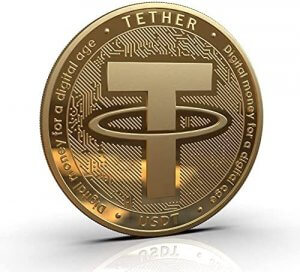Distributed Cybersecurity Firm Naoris Protocol Raises $11.5M To Reinvent Web3 Security
Cybersecurity startup Naoris Protocol is in a confident mood today after closing on an $11.5 million round of funding that it says will help it to reimagine network security for the Web3 world.

The funding comes from well-known venture capitalist Tim Draper, plus Holt Xchange, Holdun Opportunity Fund, Holdun Family Office, Expert Dojo, Level One Robotics and others, and includes several notable angel investors from the worlds of tennis and NBA, Naoris said.
The company has attracted a lot of backers because it has come up with a completely unique take on cybersecurity. It has created a mesh system that’s able to take existing networks, which are really just a sprawling mass of potential vulnerabilities, and transform them into a decentralized network of trusted nodes that can each safeguard the others.
Naoris Protocol relies on blockchain and its distributed proof of security consensus to transform each device into a trusted validator node, which is then tasked with validating every other node within the network. The idea is that the more the network grows, the more validators there will be, increasing its security. The opposite is true of centralized networks, where the risks of an attack increase as more nodes are added.
It can be thought of as a distributed security environment where every device continuously validates every other device in the network. This brings trust to all devices, securing a baseline layer and enabling this trust and risk mitigation to be inherited by every element of the network. Because each device is essentially a security watchdog for every other, they can act in synchronous harmony while adhering to, and enforcing security policies in a provably secure manner
The key to security enforcement within Naoris Protocol’s mesh is tokenization, which incentives each validator. Those devices can hold and stake CYBER tokens as a security handshake, ensuring trust and security. Then, they’ll earn rewards over time for trusted behavior, uptime stability and sharing security intelligence. This level of incentivization will result in a secure environment that grows over time, Naoris said, comparable to a “supercomputer of trust validations”. Another element of Naori’s distributed mesh is called “swarm intelligence”, which refers to artificial intelligence-powered models that aid in response optimization and monitoring of devices.
While Naoris Protocol is undoubtedly extremely ambitious in its efforts to reimagine security, it argues that a radical overhaul is necessary to safeguard the evolution from Web2 to Web3. The issue, it says, is that existing networks are insecure by design, as only a single device needs to be compromised to access them. These networks will only grow larger in the age of decentralization, hence the need for a model that leverages the distributed nature of Web3 to enhance security.
“Our vision is to leverage the cryptographic power of the many through blockchain,” said Naoris Protocol CEO David Carvalho. “[this will] fundamentally change how trust happens between devices and applications on the internet, from individual users to businesses and critical spaces by creating a machine-economy backed cybersecurity enforcement protocol that’s unstoppable, permissionless, and credibly neutral,” said David Carvalho, Naoris Protocol CEO.
The Naoris Protocol is currently in pre-production, with its testnet scheduled to launch before the end of the year. Assuming everything goes to plan, it will launch its mainnet sometime in 2023, at which time it will look to serve clients across the Web3, critical infrastructure, banking, healthcare and government sectors.
Naoris Protocol co-founder and COO Monica Oravcova said the company has reached a key milestone with today’s funding round, while securing the backing of some of the most visionary venture capitalists in the blockchain and deep tech spaces. “After an extensive period of research and development activities, we are moving into the next phase of serving our growing customer portfolio in the Web2 and Web3 space,” she said.









